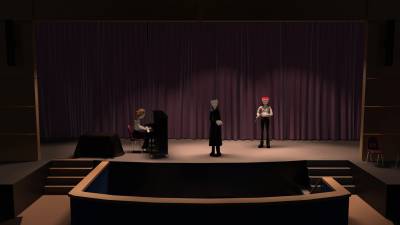
Bunny Rogers, A Very Special Holiday Performance in Columbine Auditorium (2017). Courtesy the artist and Société.
As an obsessive consumer and self-proclaimed Internet addict since childhood, Bunny Rogers (b. 1990, Houston, TX; lives and works in New York) probes how the media shaped her identity. Fixated on animated television shows like Clone High and Invader Zim and websites such as Neopets.com, Rogers grew attached to fictional people and creatures that have become recurring characters in her work. These children’s programs overlapped in time with severe and violent events widely covered by news media outlets, including the 1999 Columbine High School massacre in which 15 students and teachers died, and another 23 were injured. Rogers grew up during the rise of school shootings and cites the Columbine imagery as significant and unforgettable.
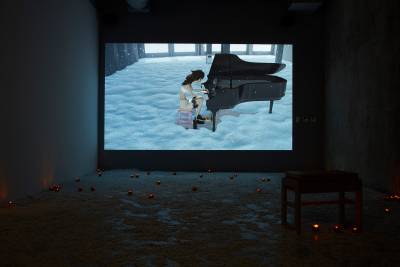
Over time, mass shootings have become embedded in our global collective consciousness, contributing immeasurably to our understanding of tragedy. Our capacity to process human suffering continues to expand by way of forgetting, desensitization, and disassociation—consciously or unconsciously, we all fall victim. The events, oftentimes too painful to remember, are forgotten and thus wiped from history. We erect public memorials and assign days of remembrance, but healing happens in a private space, undertaken individually.
“Today the media landscape looks different than it did in 1999. It is nearly indistinguishable from reality, and vice versa. Turning ‘off’ is more or less illusory.”
—Bunny Rogers
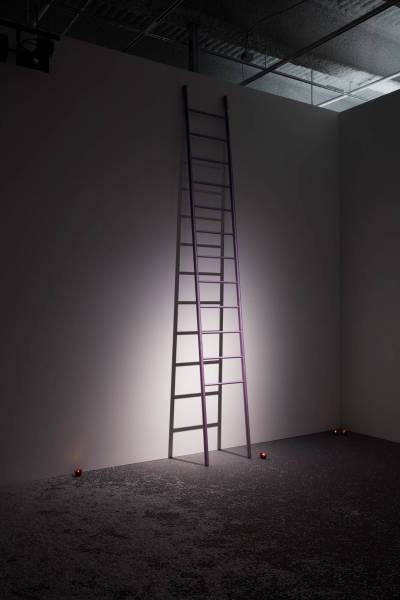
Imagery that is horrifying or pornographic, uncanny or manipulative, is consumed as automatically as any other imagery. By absorbing these images, we are registering them, and Rogers believes that “to register imagery is to corrupt imagery.” How today’s traumatic media will affect us tomorrow is unknown.
Rogers relies on corrupted memories to piece together a narrative that both mourns its origins and begs for resolution. Her videos, A Very Special Holiday Performance in Columbine Auditorium (2017) and Mandy’s Piano Solo in Columbine Cafeteria (2016) depict rehearsals of ceremonies for mourning. In the cafeteria setting, an unnamed character from Clone High (an animated TV series set in a fictional high school filled with clones of famous figures from history) who Rogers refers to as “Mandy” plays piano covers of Elliott Smith songs while drinking copious amounts of red wine. In the auditorium, three cartoon teen girls take the stage to rehearse a song for a ceremony that never happens. Rogers’ own voice is heard through the animated character with long hair who sings “Memory” from Cats, Grizabella the Glamour Cat’s song in which she reminisces about the great beauty she once was.
Surrounding these videos are Rogers’s reproductions of typical American high school furnishings. Though not taken directly from Columbine High, the familiar items become stand-in artifacts of the school shooting. They evoke and hold memories of the tragic event but retain their original appearance and functionality.
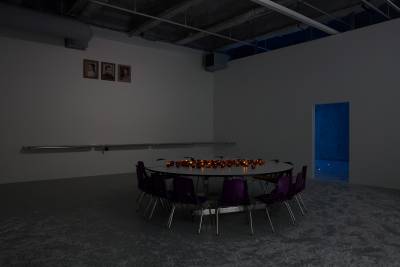
-
 John Giorno: No NostalgiaOctober 25, 2025 – April 25, 2026
John Giorno: No NostalgiaOctober 25, 2025 – April 25, 2026 -
 Corita Kent: The Sorcery of ImagesSeptember 26, 2025 – January 24, 2026
Corita Kent: The Sorcery of ImagesSeptember 26, 2025 – January 24, 2026 -
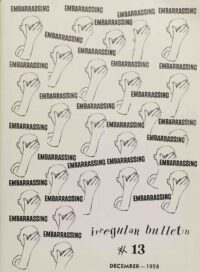 Irregularity: Corita and Immaculate Heart College’s Rule Breaking DesignsSeptember 26, 2025 – January 24, 2026
Irregularity: Corita and Immaculate Heart College’s Rule Breaking DesignsSeptember 26, 2025 – January 24, 2026 -
 Kristen Wentrcek and Andrew Zebulon: QuaternionOngoing
Kristen Wentrcek and Andrew Zebulon: QuaternionOngoing -
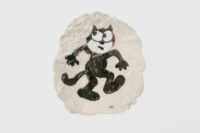 Transmissions: Selections from the Marciano CollectionOngoing
Transmissions: Selections from the Marciano CollectionOngoing -
 Nicolas Party: TreesPermanently On View
Nicolas Party: TreesPermanently On View -
 Masonic Objects: The Relic RoomPermanently On View
Masonic Objects: The Relic RoomPermanently On View



